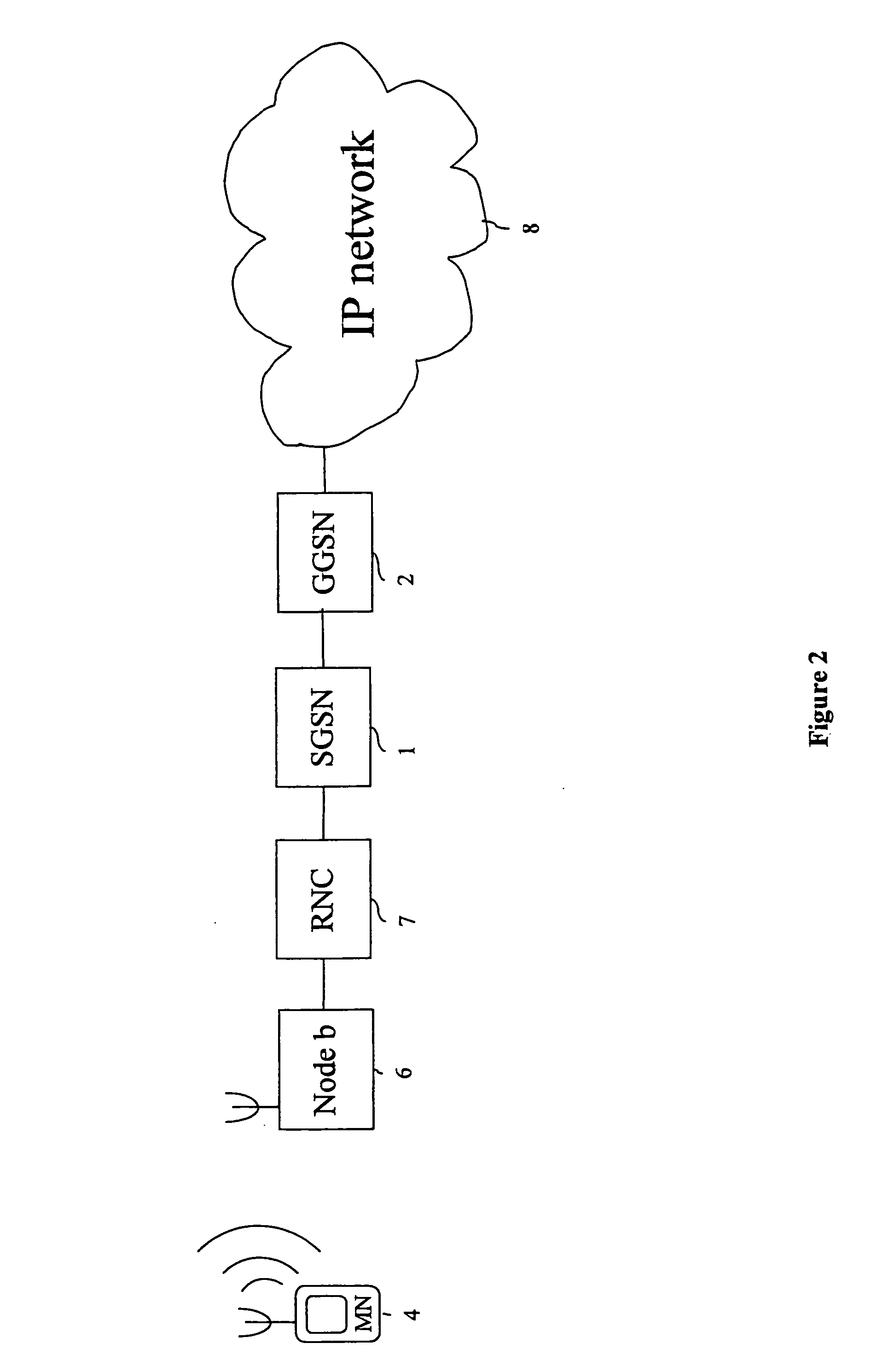Telecommunications System and Method
a technology applied in the field of telecommunications systems and methods, can solve the problems of reduced service quality, increased delays or interruptions in data packet communication via packet radio networks, etc., and achieve the effects of reducing the problem of delays and interruptions in data transmission, improving network resource utilization, and optimizing the use of communications resources
- Summary
- Abstract
- Description
- Claims
- Application Information
AI Technical Summary
Benefits of technology
Problems solved by technology
Method used
Image
Examples
Embodiment Construction
[0027]An explanation of example embodiments of the invention will now be explained with reference to a General Packet Radio System (GPRS) systems. FIG. 1 provides a schematic block diagram of a GPRS / UMTS packet radio network for communicating internet packets to and from a mobile node (MN) 4. In FIG. 1 the mobile node 4 is arranged to engage in a packet data communication session, for example web browsing or email. FIG. 1 shows elements of a GPRS network including a GPRS gateway service node (GGSN) 2 a serving GRPS support node (SGSN) 1 a radio network controller (RNC) 7 and a node b 6. Generally, the GGSN 2 and the SGSN 1 form part of a core network, CN, whereas the radio network controller RNC 7 and node b 6 form part of a radio network RN.
[0028]FIG. 2 provides a schematic block diagram of the flow of data packets communicated to and from the mobile node 4 via a radio communication link between the mobile node 4 and the Node B 6 and RNC 7. Internet packets are then communicated vi...
PUM
 Login to View More
Login to View More Abstract
Description
Claims
Application Information
 Login to View More
Login to View More - R&D
- Intellectual Property
- Life Sciences
- Materials
- Tech Scout
- Unparalleled Data Quality
- Higher Quality Content
- 60% Fewer Hallucinations
Browse by: Latest US Patents, China's latest patents, Technical Efficacy Thesaurus, Application Domain, Technology Topic, Popular Technical Reports.
© 2025 PatSnap. All rights reserved.Legal|Privacy policy|Modern Slavery Act Transparency Statement|Sitemap|About US| Contact US: help@patsnap.com



